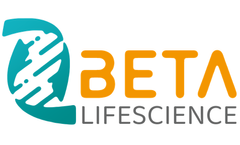Refine by
Prostate Cancer Articles & Analysis
51 articles found
Anti-Tumor APIs: Pioneering Cancer Treatment Anti-tumor Active Pharmaceutical Ingredients (APIs) are vital in today's medical landscape, addressing one of the most pressing health challenges: cancer. ...
The development principle of cancer vaccines usually includes the identification of antigens, vaccine formulation, immune activation, and targeting of cancer cells. ...
ESMO updated its recommendations for NGS in advanced cancers this year, urging broader use of NGS in additional cancer types and the inclusion of tumor-agnostic biomarkers. The ESMO Precision Medicine Working Group (PMWG) first published its recommendations for when to use next-generation sequencing (NGS) in routine practice for patients with metastatic ...
It is used to treat adult patients with metastatic triple-negative breast cancer (mTNBC) and locally advanced or metastatic urothelial cancer (UC) who have received at least 2 therapies in the past. ...
Flotufolastat F 18 binds to prostate-specific membrane antigen (PSMA) (IC50= 4.4 nM) expressed on cells, including prostate cancer cells. In patients with recurrent prostate cancer who require local treatment, positron emission tomography (PET) with an 18F-labeled ligand provides accurate diagnostic imaging. The ...
Recently, in the renowned academic journal Nature Medicine, the Kimmel Cancer Center at Johns Hopkins University published Phase 2 clinical results regarding enoblituzumab, a monoclonal antibody targeting B7-H3, for the treatment of prostate cancer. The results demonstrate that enoblituzumab can successfully induce the body's ...
Enzymes that are specific to the disease itself are often used to diagnose and monitor cancer, heart disease, and liver disease. For example, prostate-specific antigen (PSA) is an enzyme that is produced by the prostate gland and is used to diagnose and monitor prostate cancer. ...
For example, a TPD drug developed by Arvinas has achieved proof-of-concept in clinical trials for the treatment of breast and prostate cancer. Researchers are also developing TPD drugs to treat other types of diseases. ...
ELISA is commonly used to diagnose infectious diseases, autoimmune disorders, and even cancer. Another enzyme-based diagnostic tool is polymerase chain reaction (PCR), which can detect and amplify small amounts of DNA or RNA in a patient's sample. ...
X-ZELL is collaborating with Singapore General Hospital (SGH) and the National University Hospital Singapore (NUH) to explore how X-ZELL single-cell diagnostics may aid in the early detection of clinically significant prostate cancer in whole blood. The prospectively blinded, 400-patient multi-centre study officially commenced in 2020 and will lay the foundation ...
The literature shows that pathologists, being only humans under considerable pressure, may miss cancer in up to 1-3% of prostate biopsies.2,3,4 Considering the over one million men who are diagnosed worldwide per year, this may reflect a large number of patients.5 Moreover, the subjectivity of Gleason grading and tumor quantification can result in difficulty ...
By comparing the toxicity of chitosan oligosaccharides with different molecular weights and different degrees of deacetylation to prostate cancer cells PC3, lung cancer cells A549 and liver cancer cells HepG2, the researchers found that chitosan with low molecular weight and low degree of deacetylation has Better anti-tumor ...
In fact, people use this effect to kill cancer cells. What are the differences between gold nanocages and nanorods? ...
Currently, ADC has played a significant role in the treatment of some malignant tumors, such as trastuzumab in the treatment of breast cancer, but its application in the treatment of prostate cancer (PCa) progress slowly. ...
In Sun’s research, label-free quantification was applied to systematically compare the protein profiling in saliva and serum exosomes from healthy subjects and lung cancer patients, and potential candidates were discovered as biomarkers for lung cancer. ...
There are a ton of practical uses for computer vision at present times. One industry where this technology is increasingly useful in healthcare. It is impossible to exaggerate the value of computer vision services in the medical field. Its methods continue to be used more widely since they have demonstrated excellent utility in numerous medical contexts, including surgical planning and medical ...
While Movember is not just about prostate cancer, it is a great place to start; prostate cancer is the second most common cancer among men worldwide1, and the second leading cause of cancer death in American men.2 In the UK, more than 52,000 men are diagnosed with prostate ...
You may have heard of Movember, the month when men grow their facial hair in solidarity with men’s health issues, like testicular and prostate cancer. The trend has taken hold across the world and even generated its own spinoffs, like “No-Shave ...
Background Since Walsh and Donker first introduced the anatomic nerve-sparing technique for retropubic radical prostatectomy1 (RRP) in the treatment of clinically localized prostate cancer, the importance of minimizing damage to the neurovascular bundle (NVB) has been recognized as a critical element for the preservation of potency and urinary continence ...
Yale Medicine, an academic medical center with a high volume of prostate biopsies, conducted a study to determine Paige Prostate’s utility as a prescreening tool for clinical use. A total of 1,876 prostate core biopsy slides were analyzed by Paige Prostate, and only those cores categorized by the AI as “suspicious” or as out of distribution were manually reviewed by Yale ...
















